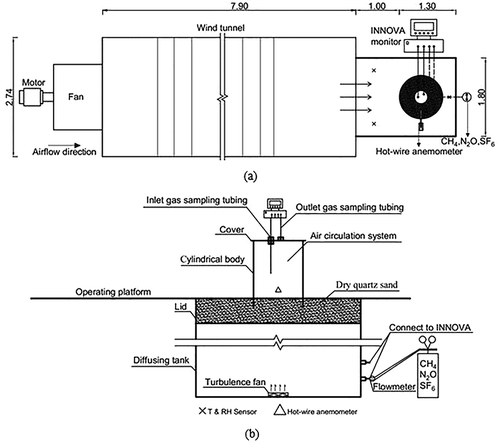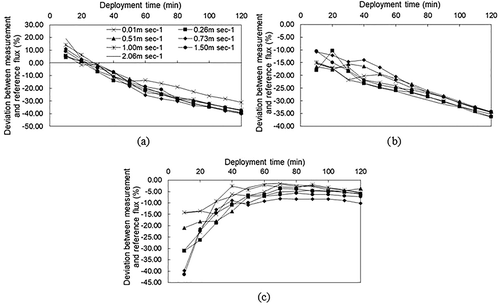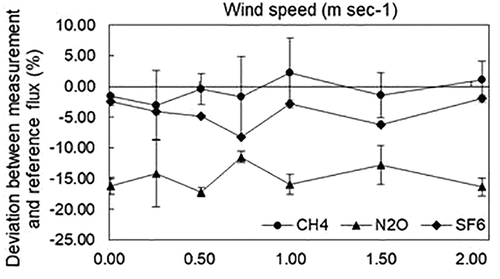Figures & data
Figure 1. Schematic diagram of the experimental setup in the laboratory. All units are in meters. (a) Top view of wind tunnel and testing area. (b) Closed chamber and gas sampling systems. ×, T and RH are sensors to measure air temperature and relative humidity of the test area; ∆, hot wire anemometer to measure wind speed over the emitting surface of the closed chamber headspace.

Table 1. Deviation ratios (%) between measured and reference fluxes under different deployment times.
Figure 2. Deviations among CH4, N2O, and SF6 fluxes measured with the closed chamber method, and reference fluxes of target gases under different external surface wind speeds (ESWS) as well as different deployment times: (a) CH4, (b) N2O, and (c) SF6.

Table 2. Examples of suitable deployment times for measuring GHG emissions in closed chambers with different configurations and settings.
Table 3. Fan frequency and average wind speed over the measurement surface provided by the wind tunnel during the test.
Figure 3. Deviations in measurement accuracies of CH4, N2O, and SF6 vs. ESWS outside the closed chamber with deployment times of 20 to 30 min, 10 to 20 min, and 70 to 90 min, respectively.

Table 4. Correlation analysis of deployment time and ESWS for CH4, N2O, and SF6 measurement accuracies as detected in a closed chamber.
Table 5. Main effect analysis of deployment time and ESWS and the interaction of the two factors for CH4, N2O, and SF6 measurement accuracies detected in a closed chamber.
